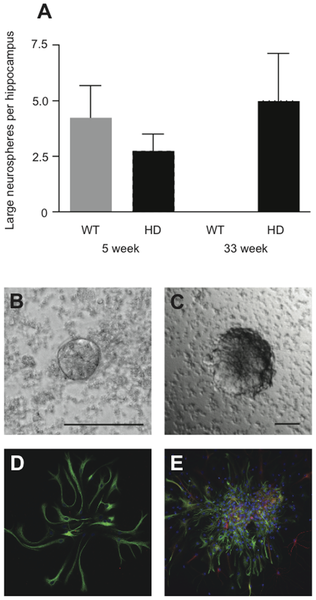User:Z3290379
Lab 4 Online Assessment
- The allantois, identified in the placental cord, is continuous with what anatomical structure?
- Identify the 3 vascular shunts, and their location, in the embryonic circulation.
- Identify the Group project sub-section that you will be researching. (Add to project page and your individual assessment page)
Lab Attendance
--Z3290379 12:55, 28 July 2011 (EST)
--z3290379 12:53, 4 August 2011 (EST)
--z3290379 11:15, 11 August 2011 (EST)
--z3290379 11:58, 18 August 2011 (EST)
--z3290379 11:05, 25 August 2011 (EST)
--z3290379 11:59, 1 September 2011 (EST)
--Elizabeth Blanchard 12:05, 15 September 2011 (EST)
--Elizabeth Blanchard 11:54, 22 September 2011 (EST)
Individual Assessments
Lab 1
Identify the origin of In Vitro Fertilization and the 2010 nobel prize winner associated with this technique.
In Vitro Fertilization began in the UK in 1978, with Edwards RG succeeding with this process. He was awarded the Nobel Prize in Medicine in 2010 for his work.
Identify a recent paper on fertilization and describe its key findings.
Improvements in human sperm quality by long-term in vitro co-culture with isolated porcine Sertoli cells
Co-Culture of sperm and Sertoli cell feeder (CCSCF) were able to maintain normal sperm motility, viability and mitochondrial function for 7 days. This is of great importance to ART technologies for long-term culture and enabling sperm to be transferred between 2 distant centers while maintaining their potential.
Identify 2 congenital anomalies.
Atrial Septal Defect- lacking of the interatrial septum, enabling blood flow between the left and right atria.
Arnold-Chiari Malformation- downward displacement of the cerebellar tonsils through foramen magnum.
--Mark Hill 09:52, 3 August 2011 (EST) These answers are fine for Lab 1 assessment.
Lab 2
Identify the ZP protein that spermatozoa binds and how is this changed (altered) after fertilization
In humans, zona pellucida sperm-binding protein 3 (ZP3), is the receptor in which sperm binds to. Modifications by enzymes occur after fertilization, inactivating ZP3 thus preventing sperm to bind.
Lab 3
What is the maternal dietary requirement for late neural development?
To prevent birth defects associated with neural development (such as spina bifida), the Australian government recommends a daily intake of folate of 600µg for pregnant women. Pregnancy Requirements
Lab 4
The allantois, identified in the placental cord, is continuous with what anatomical structure?
The allantois functions to exchange materials (e.g. gases and nutrients). This invagination of the endoderm forms part of the hindgut.
Identify the 3 vascular shunts, and their location, in the embryonic circulation.
- Ductus Arteriosus: between pulmonary artery and aortic arch
- Ductus Venosus: between umbilical vein to inferior vena cava
- Foramen Ovale: between left and right atrium
Group Project
Current and Future Research
Diagnostic Tests
Lab 5
Which side (L/R) is most common for diaphragmatic hernia and why?
The left side is the most common for a diaphragmatic hernia. These occur if the pleuroperitoneal folds (which separate lungs from the gut) fail to close properly. The right side fuses first, and therefore leaves more chance for the left side to fuse abnormally.
Lab 6
What week of development do the palatal shelves fuse?
These shelves fuse in week nine
What early animal model helped elucidate the neural crest origin and migration of neural crest cells?
The quail-chick chimera model helped to elucidate these.
What abnormality results from neural crest not migrating into the cardiac outflow tract
Tetralogy of Fallot is the congenital heart defect which results from neural crest not migrating into the cardiac outflow tract
Lab 7
Are satellite cells (a) necessary for muscle hypertrophy
No- muscle lacking satellite cells can still undergo hypertrophy
(b) generally involved in hypertrophy?
Yes- they definitely contribute, however they are not essential.
Why does chronic low frequency stimulation cause a fast to slow fibre type shift?
Chronic low frequency stimulation increases the aerobic capacity of some muscle cells. A decrease in relaxation time is noticed and this enables the muscle cells to resist fatigue.
Trisomy 21 Peer Assessment
- To begin with, the way you have arranged the order of the headings doesn’t flow very nicely
- Although the intro is concise, it doesn’t introduce the topic as much as it could- a little more detail could help. The historical reference would also be better suited elsewhere.
- Recent findings would be better suited towards the end of the page, and a short summary of the actual paper would be better than a direct quote.
- Where are your historical references? (besides the one point in the introduction)
- How does karyotyping work? This is not explained very well- expand on this.
- Associated Congenital abnormalities would be better under one heading rather than having a separate one for each defect (i.e. heart defect, limb defect)
- Heart defects should be explained in more detail and an image would help back this up
- A list of signs and symptoms would fit nicely with congenital abnormalities.
- Copyright info is missing for the John Langdon Down image- and what is its purpose here?
- Prevalence: only Ireland and the USA are listed- this shows that not much research has been done. You need a more worldwide distribution.
- The meiosis section is a little confusing, and does not exaplin how meiosis actually occurs- this section would also be better under ‘recent findings’
- Growth charts are interesting
- Your ‘terms’ list should not be placed under your references- they would be better suited above the references to make them easier to find.
- No student drawn image here?
- Overall, interesting information that has potential for a good project
